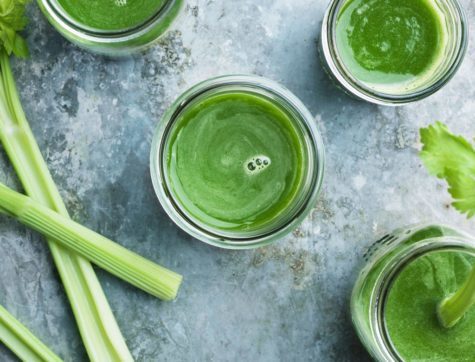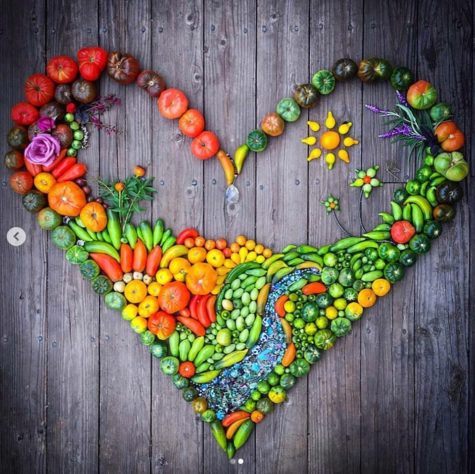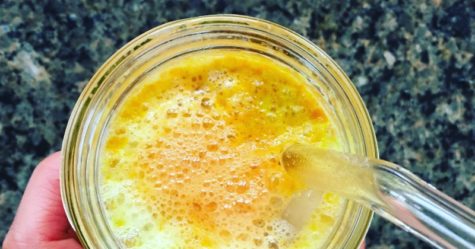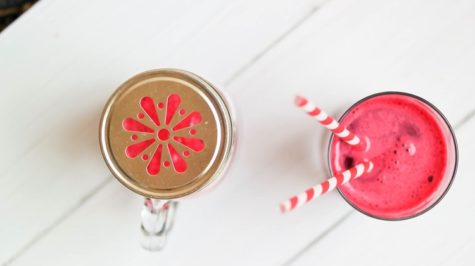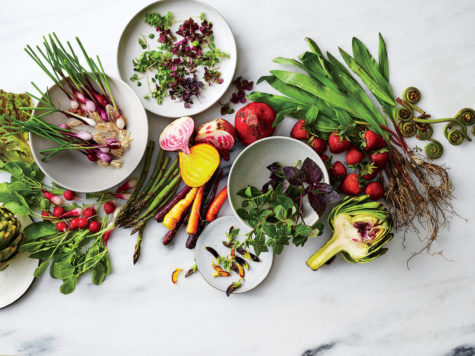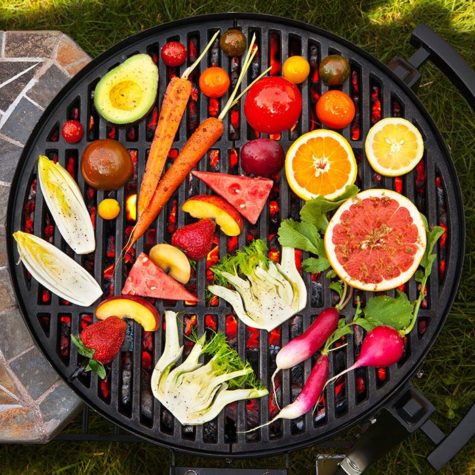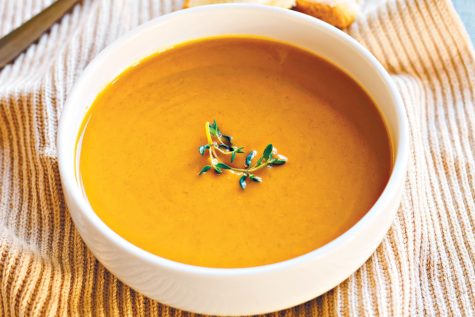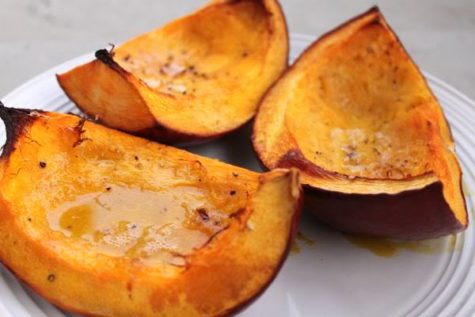Veggies
Celery Juicing
Celery Juice
Plain, fresh celery juice is one of the most powerful healing juices available to us. This clean, green drink is the very best way to start your day. Make this juice a part of your daily routine and soon you won’t want to go a day without it!”
- Thoroughly rinse one bunch of Celery.
- Run it through a juicer.
- Drink immediately for best results.
- Makes about 16 ounces of juice.
If you don’t have a juicer:
- Chop the celery.
- Blend it in a high-speed blender until smooth.
- Strain well.
Here’s what Anthony William has to say about Celery juice:
Don’t let the simplicity of humble celery mask its strength—it’s often the simplest of measures in life that gracefully work wonders in the most complex situations. I believe that celery juice is a miracle juice and that it’s one of the greatest healing tonics of all time. I’ve seen thousands of people who suffer from chronic and mystery illnesses restore their health by drinking sixteen ounces of celery juice daily on an empty stomach. That’s why, long ago, I started the movement of drinking pure, straight celery juice. Since my books came out sharing the benefits of celery juice even more widely, it’s become a global movement. I want to be sure people know how to use this potent drink correctly and successfully because its healing potential is that tremendous.
Celery juice is most powerful when you drink it solo. While it’s great to consume other green juices or vegetables juices and add in items like spinach, kale, parsley, cilantro, and apples, drink those mixed juices at a different time than your straight celery juice. These blends function differently than what I’m recommending as your greatest tool for recovering your health: pure celery juice taken on an empty stomach.
- Eating vs. Juicing Celery: The Difference
Eating celery stalks, while very healthy and important, is not the same as drinking pure celery juice. When celery is juiced, the pulp (fiber) is removed, and I believe its healing benefits become much more powerful, especially for someone with chronic illness. You’ll also be able to consume far more celery as juice than you would by eating it.
I believe that celery juice also increases and strengthens your bile. Strong bile is important for breaking down fats; it’s also needed to eliminate waste from your body. In Liver Rescue, I share hundreds of what I call Liver Troublemakers, which are the specific chemicals, pollutants, pathogens, foods, and more that contribute to a sluggish liver, causing a wide range of health problems that result in chronic illness.
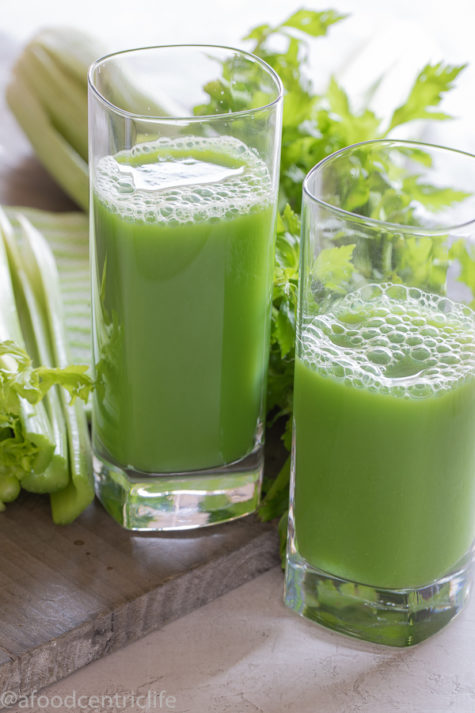
- Celery Juice Tips
Every morning, drink roughly sixteen ounces of celery juice on an empty stomach. Make sure it’s fresh, plain celery juice with no other ingredients. It takes roughly one large bunch of celery to make sixteen ounces of juice. Celery juice is a medicinal drink, not a caloric one, so you’ll still need breakfast afterward to power you through the morning. Simply wait at least fifteen minutes after drinking your celery juice before consuming anything else.
For even greater benefits or if you suffer from a chronic illness or symptom, consider drinking twenty-four to thirty-two ounces of straight celery juice per day. You can drink it all at once in the morning on an empty stomach or split it into two servings as directed below.
If you’re unable to consume your celery juice first thing in the morning before food, then the second-best option is to drink it fifteen to thirty minutes before or after eating something anytime during the day. If you’re having thirty-two ounces a day, you may wish to have it in two sixteen-ounce servings. You can drink the first in the morning on an empty stomach before eating and the second in the late afternoon or early evening, at least fifteen to thirty minutes before eating your next meal.
If you’re sensitive and sixteen ounces is too much, start with a smaller amount, such as two to eight ounces, and increase how much you consume over time. If you’re too sensitive for two ounces, you can try sixteen ounces of straight cucumber juice instead for now. Cucumber juice is very gentle, and you can try celery juice again once you’ve been drinking cucumber juice for a while.
Use organic celery whenever possible. If you’re using conventional celery, be sure to wash it especially well before juicing.
It is best to make celery juice fresh and then drink it immediately. If you’re unable to make your celery juice right before you want to drink it, it’s important to drink it within twenty-four hours of making it. The best way to store the juice is in a glass mason jar with a lid and keep it in the fridge. If you wish, you can also freeze celery juice and drink it as it defrosts. However, I believe the powerful medicinal properties of celery juice will decrease when it’s frozen, so it’s best to drink it fresh whenever possible.
If your mornings are busy, you can save time by rinsing the celery and chopping it (if needed) the night before so it’s ready for you to juice in the morning.
If you find the taste of straight celery juice too strong, you can juice one cucumber and/or one apple with the celery. This is a great option as you get adjusted to the flavor. As you get used to it, keep increasing the ratio of celery; I believe the greatest benefits come when celery juice is consumed on its own. This also means leaving out any lemon, lime, ice, or other added ingredients, all of which change the pure celery juice’s healing benefits. For the best results, think: straight celery. Also, if you find the juice bitter, it may be because of the celery leaves. Some people prefer to leave them on while others prefer to remove them. Both options are great; it’s an individual choice.
Some people may experience a change in their bowel movements when starting to consume celery juice. This is a normal reaction that some individuals may experience. The loose stools will pass as your body heals, and you may notice your bowel movements become more regular and healthier than ever.
Found at: Encyclopedia of Herbology
Healing Juices
Here is a simple list of juices to cure a variety of ailments. Enjoy!
- Arthritis – Carrot, Celery, Pineapple, Lemon
- Asthma – Carrot, Spinach, Apple, Garlic, Lemon
- Cold – Carrot, Pineapple, Ginger, Garlic
- Constipation – Carrot, Apple, Cabbage
- Depression – Carrot Apple Spinach Beet
- Diabetes – Carrot, Spinach, Celery
- Eyes – Carrot, Celery
- Fatigue – Carrots, Beets, Green Apple, Lemon, Spinach
- Hangover – Apple, Carrot, Beet, Lemon
- Headache – Apple, Cucumber, Kale, Ginger, Celery
- High Blood Pressure – Beet, Apple, Celery, Cucumber, Ginger
- Indigestion – Pineapple, Carrot, Lemon, Mint
- Kidney Detox – Carrot, Watermelon, Cucumber, Cilantro
- Kidney Stones – Orange, Apple, Watermelon, Lemon
- Memory Loss – Pomegranate, Beets, Grapes
- Nervousness – Carrot, Celery, Pomegranate
- Stress – Banana, Strawberry, Pear
- Ulcer – Cabbage, Carrot, Celery
Beautifying Raw Foods That Also Improve Immunity
Some of the most beautifying raw foods on the planet are also some of the best you can eat for optimal immunity, along with increased vitality and strength. That’s because many raw foods are high in minerals which are the micronutrients that your body absolutely must have for optimal health.
Without enough minerals, our skin, mood, and immunity all suffer greatly. They keep our bodies functioning on a deeper, cellular level, and the antioxidants found in many raw foods also help improve our beauty and defense mechanisms against various types of disease.
Several vitamins are also important for natural beauty and optimal immunity. So check out these 10 beautifying raw foods that are packed with nutrients that will improve your hair, skin, nails, immune system, and even your digestion and brain health too!
Pineapple
Would you believe that pineapple is one of the best sources of Vitamin C you can eat?
Pineapple’s Vitamin C content rivals that of most all fruits. The delicious sweet fruit contains over 100 percent of your daily Vitamin C needs along with high levels of the enzyme bromelain which helps break down proteins in the body. These properties not only improve digestion and immunity, but they also reduce acidity in the body which increases your body’s alkalinity to prevent inflammation.
Fresh or frozen pineapple is the kind of pineapple you’ll want to consume, though. Avoid the canned or dried varieties which have been more heavily processed and often have added sugars and/or oils. Use frozen or fresh pineapple in a smoothie, enjoy it as a snack, or pair it with a morning bowl of overnight oats if you like.
Camu Camu
Camu camu is a superfood that’s so beneficial for women that it’s even considered to be a medicinal herb in some cultures. The fruit comes from the Amazon and is the highest source of Vitamin C per serving on the planet. It’s also a good source of amino acids and several trace minerals.
Because of its high Vitamin C and amino acid content, camu berry is amazing for your skin, improving anxiety, and it can help aid in digestion. Camu camu also has antiviral properties which can help fight off candida and other fungal-related infections that demean your health.
The fruit is sold as a freeze-dried, raw powder here in the United States and it adds a sharp, tangy texture to smoothies. It pairs well with pineapple, banana, berries, and cacao, or it can be used in raw desserts, cookies, or added on top of a bowl of overnight oats. Just be sure not to heat camu camu since Vitamin C is heat-sensitive.
Raw Cacao
Speaking of cacao, it’s amazing for your health and beauty. Raw cacao is high in sulfur, a beauty-boosting mineral that also helps detoxify the liver.
Raw cacao is also high a potent source of antioxidants, flavonoids, and other minerals such as iron and magnesium. Cacao is even high in copper and zinc which improve your immunity and the strength of your blood.
Just be sure to go for the good stuff when you consume raw chocolate. You’ll want to avoid chocolate that is high in sugar and eat it raw and unsweetened, or choose dark chocolate with at least 90 percent cacao content. Or you can have raw, superfood chocolate—your choice.
Carrots
Like other orange-colored fruits and veggies, carrots are loaded with beta-carotene which is a precursor to Vitamin A, a natural beauty and immunity-boosting vitamin. Carrots are also one of the best sources of Vitamin C among all vegetables, and they’re high in water, fiber, and low in sugar.
You can eat carrots raw or cooked, but do be mindful most of the Vitamin C found in carrots is lost during the cooking process since Vitamin C is heat-sensitive. For this reason, to retain all the benefits carrots have to offer, be sure to eat them (and other fruits and veggies) in raw form whenever possible.
Carrots are also great for hormone balance, filling you up, and they can even be added to smoothies for a boost of nutrition and natural sweetness!
Acai Berry
Goji berries are an incredibly popular berry that’s great for your skin, and acai berry is another one of the top berries to consume for beauty and immunity. Acai berry is an Amazonian superfood that is a powerful source of omega-3 fatty acids which protect your brain, skin, heart, lungs, and your nervous system.
Acai is also a wonderful source of amino acids and several key minerals that improve your strength and immunity. It’s also low in sugar which makes it great for your blood sugar levels.
Acai fruit is sold as a raw, freeze-dried powder, so consume whichever you prefer. If it’s your first time using acai, pair it with blueberries and raw cacao where it takes on an especially lovely flavor.
Raw Almonds
Raw almonds are well-known for their high-protein content, but they’re also excellent for your skin. Almonds are a top food to consume to improve natural beauty because they’re rich in Vitamin E, magnesium, iron, zinc, copper, monounsaturated fats, and fiber, which slows down the release of insulin in your body.
Almonds also support collagen levels in the skin which can help to prevent and reduce fine lines and wrinkles. Almonds even improve the body’s response to stress, which can trigger inflammation if kept unchecked, and they’re alkaline foods when consumed in 100 percent raw form.
Dark Cherries
Dark, sweet cherries should be one of the number one foods you eat to beautify your skin and improve your immunity. Cherries contain dark compounds of antioxidants that promote longevity and decrease inflammation in the body and are very similar in nutrition to berries.
Dark cherries can be bought fresh or frozen, and they pair wonderfully with cacao, greens, berries, and other superfoods in a smoothie. Dark, sweet cherries can also decrease joint pain, improve sleep, and help protect the heart and skin from oxidative stress.
Romaine Lettuce
That’s right, one of the most simple greens that’s not kale is also one of the best you can eat! Sweet and hydrating romaine lettuce is incredible for your beauty and immunity because it’s one of the top sources of Vitamin C among all greens, it’s high in water to hydrate the cells, and it’s even a natural source of omega-3 fatty acids, believe it or not.
Use romaine in raw juices, smoothies, or make a huge salad with it and enjoy its naturally hydrating and beautifying benefits!
Pumpkin Seeds
If your skin and nails could use some help quickly, add some pumpkin seeds to your diet and consider yourself brand new! Pumpkin seeds are one of the best sources of zinc, protein and iron, three nutrients that improve skin health, blood sugar levels, immunity, and energy levels extremely quickly.
Pumpkin seeds can even improve your mood and blood sugar levels since they’re one of the best sources of magnesium among all nuts and seeds. And, they’re one of the best seeds you can eat to improve alkalinity due to their naturally high chlorophyll content.
Hemp Seeds
Hemp seeds are an incredible source of omega-3 fatty acids, they’re one of the best sources of iron and zinc you can eat, and they’re a complete source of protein making them great to consume in place of animal products. Hemp seeds are also a great source of chlorophyll which improves alkalinity, immunity, digestion, and the look of the hair, skin, and nails.
And of course, all raw fruits, vegetables, and greens are amazing for your beauty and immunity. Consume as many as you desire along with these 10 raw foods above, and enjoy the fall season with a greater sense of well-being and great skin too!
Article written by Heather McClees of The Soulful Spoon
Sunshine juice
A naturally sweet and low-glycemic raw, veggie juice that’s packed with ingredients to boost your mood, heart health, improve your blood pressure, and ensure optimal digestion of nutrients!
Ingredients
- 1 head of organic romaine lettuce, washed (or 1 bunch of organic kale)
- 1 organic lemon
- 1 large organic carrot, peeled
- 2 stalks of organic celery
- 1 one-inch knob of ginger root
- 1/2 an organic cucumber (or zucchini)
- (optional): 1/4-1/2 a green apple (or a leftover apple core)
Instructions
Add all the ingredients to the juicer in the order listed and juice. Pour the juice over a glass of ice for a nice and chilled juice, and enjoy! Clean the juicer immediately after (this is much easier to do right now than later). Let the juicer parts dry well and put away for tomorrow.
Found at Raw Food Recipes
Flu-Fighting Beet and Cucumber Juice
This beet and cucumber juice is the perfect drink to have at your side during any flu season. It will give you a boost in energy, as it is packed with flu fighting vitamins and minerals! Aside from all the nutrition this juice generously yields, it actually tastes delicious!
The cucumbers add a refreshing note to the juiced beets, which surprisingly does not have an earthy undertone. Instead the beets are sweet, especially when squeezed with a little lime juice. The lime highlights the sweetness of both the cucumber and beets, leaving you with just a delicious and refreshing juice full of flu fighting nutrients. Give it a try if you’re feeling under the weather, or simply to give your body a boost.
Ingredients
- 2 raw medium beets
- 1½ – 2 medium cucumbers
- juice of 1 lime or lemon ( I use lime)
Instructions
Simply wash and chop the beets and cucumbers and put into your juicer and squeeze in the lime juice. Enjoy right away or store in the refrigerator in an airtight container (mason jar) for the next 3 days!
Found at Raw Food Recipes
Health Promotion the Vegetarian Way
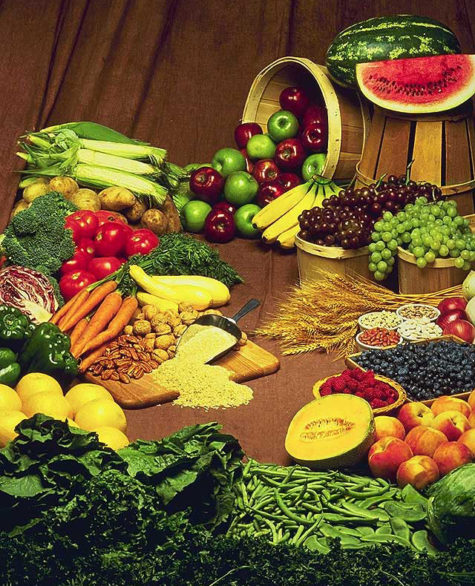
The word ” Vegetarian ” was coined by the Vegetarian Society of the United Kingdom in about 1847. The word does not come from vegetable as is generally assumed : It is a derivation of the Latin word ‘ vegetari ‘ which means to enliven.
The practice of vegetarianism, however, goes far back in history. Many noted philosophers and religious teachers urged their followers to avoid a flesh diet. Brahminism, Jainism, Zoraostrianism and Buddhism acknowledged the sacredness of life and the need to live without causing suffering; so did many of the early Christians.
There are various types of vegetarians. ” Vegans “are the strictest vegetarians who eat only plant foods and exclude all animal by-products such as eggs, milk, cheese, curd, butter, ghee and even honey. There are ” lacto vegetarians ” who eat plant foods as well as dairy products and ” lacto-avo vegetarians ” who eat eggs besides plant foods and dairy products. There are even fish-eating vegetarians. The common factor among them is that they do not eat the flesh of warm- blooded animals.
Meat seems to have assumed an exaggerated importance nutritionally. It is generally mistakenly believed that nutritional deficiencies , especially of proteins and vitamin B12 and poor health may result if animal foods are eliminated. Studies however, have indicated to health problems or deficiency diseases for those on a vegetarian diet.
Of the 22 amino acids -the essential components of proteins – needed by the body for its normal functioning, only nine need be supplied by the diet as the body synthesizes the remaining 13. The body can use 100 per cent of this protein if all ten amino acids are in ideal proportions. If, however, one or more of the essential amino acids are present in less than the ideal amount, the value of the entire protein is reduced in the same proportions. On a quality rating scale of 1 to 100, egg protein is 95, milk is 82, meat and poultry are 67, fish 80, grains are between 50 to 70 and legumes, nuts and seeds are between 40 and 60.
The so-called protein deficiency in a vegetarian diet is in fact more imaginary than real as the contribution of the protein value of the green vegetables has been ignored and the true protein requirement is less than that assumed. Green vegetable protein is as high in quality as milk protein and thus makes a very valuable contribution to the vegetarian’s protein nutrition. The high quality of protein balances the lower quality of other vegetarian proteins such as nuts and beans.
The recommended daily allowance of 70 value proteins is 44 grams per day for women and 56 for men. Researchers have now discovered that the actual protein requirement is much less, being 15 grams per day of 100 value protein or 21.5 grams of 70 value protein or 30 grams of 50 value protein. A wholesome vegetarian diet can, therefore, easily meet the body’s protein needs.
Moreover, it is possible to combine two low-value plant proteins to get a protein of higher quality. Thus, wheat which has a deficiency in the amino-acid lysine but an abundance of sulphur containing amino-acids can be combined with beans which have the opposite enrichment combination. Taken together, they complement each other to form a complete protein.
As regards the adequacy of B12 nutrition, laco-avo vegetarians and lacto-vegetarians should not feel concerned on this score, as the B12 needs can be easily supplied by dairy products and eggs. A quarter liter of milk or 100 grams of cheese or 1 egg per day will supply the recommended daily allowance. This vitamin once eaten is stored in the liver. Vegans, however, do not get this vitamin in their food, yet reliable scientific studies have found no evidence of B12 deficiency diseases. It is therefore, presumed that this vitamin can be synthesized in the body.
Auto-Intoxication
Most diseases of the human body are caused by auto-intoxication or self-poisoning. The flesh of animals increases the burden of the organs of elimination and overloads the system with animal waste matter and poisons. Chemical analysis has proved that uric acid and other uremic poisons contained in the animal body are almost identical to caffeine, there and nicotine, the poisonous stimulating principles of coffee, tea and tobacco. This explains why meat stimulates the animal passions and creates a craving for liquor, tobacco and other stronger stimulants.
Excessive uric acid resulting from meat-eating also causes diseases such as rheumatism, Bright’s disease, kidney stones, gout and gall stones. Meat proteins cause putrefaction twice as rapidly as do vegetable proteins. The morbid matter of the dead animal body is foreign and uncongenial to the excretory organs of man. It is much harder for them to eliminate the waste matter of an animal carcass than that of the human body. Moreover, the formation of ptomains or corpse poisons begins immediately after the death of the animal and meat and poultry are usually kept in cold storage for many days and even months before they reach the kitchen.
Another powerful influence tends to poison the flesh of slaughtered animals. As is well known, emotions of worry, fear and anger actually poison blood and tissues. Imagine the excitable condition of animals after many days of travel, closely packed in shaking vehicles – hungry, thirsty, scared en route to the slaughter -houses. Many die even before the end of their journey. Others are driven half dead with fear and exhaustion to the slaughter pans, their instinctive fear of death augmented by the sight and odor of the blood shambles.
Flesh is often a carrier of disease germs. Diseases of many kinds are on the increase in the animals, making flesh foods more and more unsafe. People are continually eating flesh that may contain tuberculosis and cancerous germs. Often animals are taken to the market and sold for food when they are so diseased that their owners do not wish to keep them any longer. And some of the processes of fattening them to increase their weight and consequently their market value, produce disease. Shut away from light and pure air, breathing the atmosphere of filthy stables, perhaps fattening on decaying foods, the entire body now becomes contaminated with foul matter.
Benefits of Vegetarianism
A vegetarian diet can have many nutritional benefits, if it is rich in fruits and vegetables, and contains moderate amounts of seeds, nuts, whole grains and legumes. One of the main benefits of a proper vegetarian diet is its low caloric content in relation to the bulk supplied, which helps maintain ideal weight.
Another benefit of the vegetarian diet is the much lower intake of fat, if dairy products, seeds and nuts are eaten sparingly. This accounts for lower serium cholesterol levels found in vegetarians, which considerably reduces the risk of developing heart diseases and breast and colon cancer.
A third nutritional advantage of the vegetarian diet is its high fiber content. Fiber, being indigestible, increases the bulk of the faces, keeps them soft and makes them easy to expel. One study has indicated that lacto-avo vegetarians consume twice as much and vegans four times as much fiber as non-vegetarians. High fiber intake has been associated with decreased risks of diseases of the colon, appendicitis, cancer of the colon and rectum, hiatus hernia, piles and varicose veins.
McCarrison, one of the greatest authorities on food, has outlined a perfect diet. According to him:
” a perfectly constituted diet is one in which the principal ingredients are milk, milk products, any whole cereal grain or mixture of cereal grains, green leafy vegetables and fruits. These are the protective foods. They make good the defects of other constituents of the diet, protect the body against infection and disease of various kinds, and their use in sufficient quantity ensures physical efficiency. ”
Vegetarianism is thus a system based on scientific principles and has proved adequate for the best nutrition free from the poisons and bacteria of diseased animals. It is the best diet for man’s optimum, physical, mental and spiritual development.
Roasted Stuffed Papaya
This is an adaptation of a hearty Caribbean dish, chock full of antioxidants, vitamins, minerals, color, and a pungent curried flavor. Perfect for those who want to reduce meat intake but who are not yet ready to go all the way.
Ingredients:
- 4 – 6 lb ripe Mexican papaya
- 1/2 teaspoon sesame oil
- 2 teaspoons corn oil
- 2 cloves minced garlic
- 1/2 lb mushrooms
- 1/2 teaspoon sea salt
- Freshly ground multicolored peppercorns
- 2 cups chicken broth
- 2 cups coconut milk
- 1 teaspoon cumin
- 1 teaspoon turmeric
- 1/2 teaspoon chili powder
- 2 cups white rice
- 1/2 cup mozzarella cheese
- 1/2 cup Parmesan cheese
- 2 teaspoons butter chopped
Preheat oven to 350 degrees. Use a nonstick cooking sheet (if unavailable, spray a cooking sheet with vegetable oil spray or grease lightly with corn oil).
Cut the papaya in half. Scoop out and discard seeds. Wash then pat papaya dry with towel; set it on the pan and set aside.
Meanwhile, heat sesame oil and 1 teaspoon of the corn oil in a cast iron skillet on medium (vegetable spray is fine). Add garlic to the skillet. Wash mushrooms thoroughly. Chop coarsely. Add to the garlic; saute the two ingredients. Add a pinch of sea salt and finely ground pepper.
Put mushroom/garlic blend, broth, coconut milk, spices the remaining teaspoon of corn oil, and the rice into a rice cooker. Turn on “cook.”
If you don’t have a cooker, add the ingredients (mushroom, garlic, broth, milk, spices, oil, rice) and cook as you would normally cook rice.
When the rice is done, pour into a mixing bowl. Add half of the cheeses. Stir. Stuff the flavored rice into the papaya shells. Top with remaining cheese and dot with the butter. Bake 30 to 35 minutes or until bubbly and the top browns. Serve hot with salad.
From: Four Seasons of Mojo
Grilling Fruits and Vegetables
Grilling fruits and vegetables is not hard. You just need to have a clean grill, thoroughly washed fruits and vegetables and you can do whatever you want with them. You can cook them right off the grill or you can use sticks or a grilling pan. Vegetables will cook better if brushed with quality oil and sprinkled with fresh herbs. The natural sugars of fruits will be more pronounced when grilled because they will be caramelized with an added smoky flavor. Who wouldn’t want that, right? Below are some fruits and vegetables that you can grill at your next barbecue.
- Apples
The humble apple can be grilled too. Apples when cook becomes more delicious when cooked and becomes even more delicious when grilled because the heat sweetens and soften the fruit. Cut into thick slices and place directly on the grill. Sprinkle some cinnamon sugar before removing the apples from the grill and you’re all set.
- Artichoke
Halve 6 baby artichokes, and brush with olive oil. Grill cut-side-down 6 minutes. Turn, and sprinkle with 1 Tbs. each minced garlic, rosemary, and thyme. Grill 4 minutes more.
- Asparagus
Steamed or blanched asparagus is good, but grilling adds more punch to it. Lightly char the asparagus over the grill, toss them in a bowl after and add some extra virgin olive, a bit of chili flakes, salt and pepper to add more taste to it.
- Avocado
Want to make some smoky guacamole? Cut the avocados in half and grill them for 2 minutes on each side. Follow your favorite guacamole recipe and enjoy it with your preferred chips.
- Banana
Place banana on grill with skin intact. Turn it until it is deep brown all the way around. Cut open, to reveal the baked banana. Serve with cold whipped cream and a touch of cinnamon for contrasting temperatures, color, and flavor.
- Bell Peppers
You can grill them whole, cut in half or chunks. Roasted red and green peppers are good in salads or in an antipasto platter. You can also sprinkle them with extra virgin olive oil, salt and pepper and make a sloppy roasted pepper sandwich.
For a sizzled Red Pepper Salad, cut 2 red bell peppers into 8 wedges each, and thread onto skewers. Coat with cooking spray, and grill 12 minutes. Transfer to bowl, and toss with 1 cup cooked chickpeas, 1/2 cup chopped fresh fennel, 1 Tbs. olive oil, and 2 tsp. lemon juice.
- Berries
Here’s a recipe for a mixed Berry Compote. Combine 3 cups fresh berries with 2 tsp. light brown sugar, 1 tsp. lemon juice, and 1/2 tsp. cinnamon. Cut 2 10-inch lengths heavy-duty foil, and spoon 1 1/2 cups berry mixture onto center of each foil sheet. Fold edges together to seal packets, and grill packets 5 minutes.
- Broccoli
Toss 4 cups broccoli florets with 2 Tbs. garlic oil in bowl. Grill 6 minutes using a grid-style grill topper. Transfer broccoli to bowl, toss with 3 Tbs. prepared BBQ sauce, then grill 2 minutes more.
- Corn
Put corn with husk and silk intact on the grill away from flames. Turn periodically – about 15 minutes. Shuck the corn and remove the silk. Eaten as is, roasted corn has a rustic smoky flavor.
You can pull the husk off and grill with butter and salt. Grill it for about 5-7 minutes. A bit of char will add to its smoky flavor as compared to leaving the husk when grilling.
Tasty toppings range from the expected butter and sea salt to the more interesting serving suggestions I learned from my Latino friends. Squeeze the juice of a lemon or lime on the corn in place of salt. Try a dash of ground red pepper, a splash of hot sauce or a sprinkle of Parmesan cheese to take it from a side dish to a main course. This is a vegetarian delight.
- Eggplant
Eggplants are versatile and every eggplant growing nation have made some eggplant grilling for decades. When grilled, the outer skin becomes crispy and the insides creamy. You can cut them crosswise or lengthwise and coat them with some extra virgin olive oil, salt and pepper and cook for 6 minutes or until the eggplant is tender. You can dip it in marinara sauce or malt vinegar or blue cheese. The possibilities are endless.
- Green Beans
They are wonderful when grilled, but will slide down or slip through the grill. The solution? Go get a grill basket. You can cook these slender vegetables without losing or burning one of them. After cooking, just toss them in a bowl, sprinkle some extra virgin olive oil, salt, pepper and a bit of butter to make everything nice and tasty.
Alternatively, you can thread string beans onto skewers (don’t crowd them too tightly). Brush with garlic oil; grill 4 minutes on each side.
- Nectarines
Cut them in half, drizzle them with a bit of extra virgin olive oil and sprinkle some brown sugar after grilling. It’s just like taking a bite of heaven.
For nectarine halves with goat cheese and pistachios, grill 4 pitted nectarine halves 5 minutes on each side. Top with 1 tsp. soft goat cheese, 1 Tbs. honey, and 2 tsp. toasted chopped pistachios.
- Peaches
Fresh peaches are good, canned peaches are great desserts, but grilled peaches are heavenly. One great thing about grilled peaches are when you take a bite, you will get a chutney-like texture which can compliment grilled chicken or steak. If you have a sweet tooth, you can grill peaches and sprinkle with cinnamon sugar.
- Pineapple
Grilling pineapple reduces its sourness or acidity, but enhances its sweetness because the fruit is caramelized and its natural sugar adds to its sweetness. It’s just like eating hot, fruity candy.
Peel pineapple; slice width-wise in 1/2 inch slices. You can cut them into circles or wedges and place them directly on the grill for 3 or 4 minutes on each side. If you want it to be sweeter, add a few drops of honey after grilling. Eat as an accompaniment to seafood or fish, or as a desert.
For a tequila-lime pineapple, whisk together 3 Tbs. tequila, 1 1/2 Tbs. agave nectar, 1 Tbs. lime juice, and 1/8 tsp. cayenne pepper in bowl. Add 4 fresh pineapple rings, and marinate 2 hours. Grill 7 minutes on each side. Serve with reserved marinade.
- Portobello Mushrooms
You can use these big and round mushrooms as a substitute for your ground beef patty. Portobellos have a meaty consistency which will be better if you brush it with olive oil and cook them for 7 minutes on each side.
- Squash
You can roast summer squash, such as party pan, chayote, zucchini, or hard-shelled winter squash like butternut, delicata, or acorn. Summer squash should be clean and dry. Then cook whole, slice and add to kabobs, or chop and cook inside foil with olive oil and season to taste.
Summer squash can also be cut in half, the seeds and insides removed, brushed with corn, peanut, or olive oil, and seasoned with lemon, sea salt, and pepper. Ground ginger or cinnamon goes well with winter squash as well. Place prepared winter squash halves in foil. Put them on the barbecue grill. Roast until tender, about 35 to 40 minutes.
For lemon-basil butternut slices, cut peeled butternut squash into 1/4-inch-thick slices; coat with cooking spray. Grill 20 minutes. Sprinkle with 2 Tbs. olive oil, 1 Tbs. lemon juice, 8 basil leaves, and 3 Tbs. raisins.
- Sweet Potato
Scrub the potato, rinse it, and pat it dry. Prick it with a fork. Wrap it in foil. Place it on the grill. Turn periodically. It cooks in about half an hour on a medium grill. Test for doneness; it should feel soft. Cut it open. Carve an X shape on each half. Squeeze and fluff potato. Serve warm with butter, sea salt, fresh ground pepper, cinnamon, and cayenne. Roasted Sweet potato with a dash of spice is sure to add nice warmth to a chilly evening.
For sesame sweet potatoes, cut 3 large sweet potatoes into 1/4-inch-thick slices; brush with 2 Tbs. toasted sesame oil. Grill 15 to 20 minutes, or until tender and browned.
- Tomato
Smoky salsa or a smoky tomato sauce or a smoky side for your shawarma or kebab? Slice the tomatoes in half, grill them with a bit of olive for about 3 minutes on each side and you’re done.
- Watermelon
Who would have thought that that grilling a watermelon is such a delicious experience? There’s only a few people who like their watermelons grilled, but trust those people, they did one good thing into another wonderful experience. You can add honey and some lemon juice to make more exciting or you can make a salad by mixing arugula and some balsamic dressing. Just remember, watermelon cooks fast and it’s better to cook them using indirect heat.
- Zucchini
Cut into thin slices and coat them with olive oil, salt and pepper. Grill them for 1 minute and you will have a delectable treat.
For zucchini with Parmesan and pine nuts. Halve 4 small zucchini; coat with cooking spray, and grill 15 minutes. Top with 1 1/2 oz. shaved Parmesan cheese, 1/4 cup chopped fresh mint, and 2 Tbs. toasted pine nuts.
Sources:
- Four Seasons of Mojo
- Xen Life
- Vegetarian Times
Pumpkin Soup
- Pumpkin
- Onion
- Salt
- Oil
- Water
- Cinnamon, Nutmeg, and Allspice
- Croutons or toasted pumpkin seeds to garnish
Cut the pumpkin open and remove seeds and the stringy portion of the interior. Cut the pumpkin into about one inch cubes. Slice the onion and saute for a couple of minutes, then add the pumpkin. Saute for about five minutes, stirring, and then add a cup of water, put on a lid, and let it simmer for forty o fifty minutes, until the pumpkin is quite tender.
At this point the pumpkin, or some portion of it, can be mashed to thicken the broth. Add some more water to the onion / pumpkin mixture to make it soupy. Heat and season with salt, cinnamon, and nutmeg, or any other herbs you might want to use for the seasoning.
The soup may be garnished with croutons, toasted pumpkin seeds, and or sour cream.
- Note:
This recipe did not include any definitive amounts. I think this is because the sizes of pumpkins used may vary widely. I think you could just follow your own intuition, and season it to taste.
Saute and seasoning variations:
- equal parts of oil and orange juice
- two parts oil, one part lemon juice, sugar or honey to taste
From: Tassajara Cooking
Baked Winter Squash
Here is a simple recipe for baking winter squash, acorn squash, pumpkin, and other edible fall curcurbits. This is a simple recipe, and the ingredients are equally simple. All you need is the ripe squash and oil (or butter).
Here’s the how to:
Cut up the squash, remove seeds and arrange the pieces in a baking dish. Baste the pieces generously with oil or melted butter, and bake in a 350 degree oven from forty to sixty minutes, depending on the size of the pieces. Baste every ten or fifteen minutes for added moistness and flavor.
This recipe can also be made with whole squashes. Baste with oil and bake until knife or fork-tender. When baked whole, it can be carved at the table like a roast.
Basting variations:
- equal parts of oil and orange juice
- two parts oil, one part lemon juice, sugar or honey to taste
- a few dashes cinnamon, nutmeg, or allspice in any of the basting mixtures
From: Tasajara Cooking
